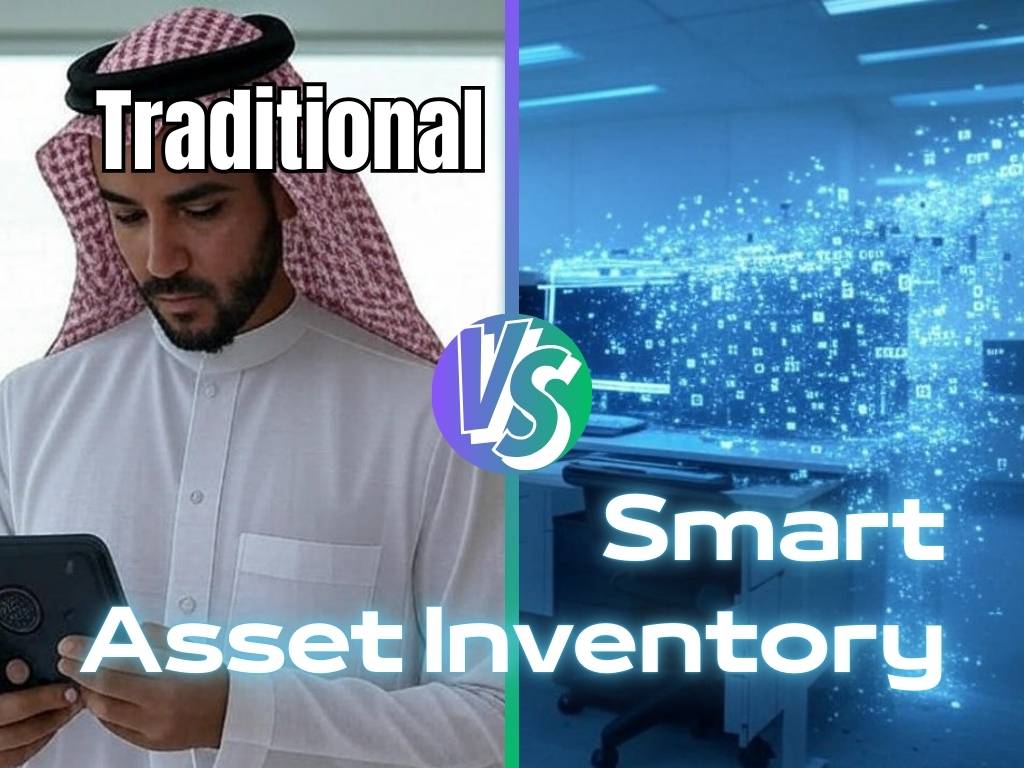Ever since the dawn of the modern business, spreadsheets on Excel were the main method to keep track of fixed assets in a company. This, indeed, might work at the very beginning of the business, but as the business grows, the manual entry involved will inevitably lead to countless errors. In such a hectic environment, companies possess huge amounts of fixed assets that require so much time and labor force to conduct inventories & track these fixed assets. Fixed assets represent the largest investment of the company, from the tangible fixed assets (furniture for example) to the intangible fixed assets like the intellectual property. So, what is the cost of spreadsheets in fixed assets management?
The Perils of Excel: Why Spreadsheets Are Not Enough for Fixed Asset Management
Indeed, mal management of fixed assets can lead to countless discrepancies like having inaccurate financial reports due to the high error margin, consequently affecting the bottom line of the company. This is why a good fixed asset management system is crucial for any company’s success as it increases depreciation accuracy, increases savings, optimizes business efficiency etc.
I’m going to talk about the pitfalls of using spreadsheets & its negative impacts on the company because it’s rather important for companies be aware of the disadvantages that accompanies the usage of spreadsheets. To begin with, spreadsheets have a huge error margin (about 30%), it encompasses security threats, not to mention that data could be compromised & is highly likely to be manipulated.
The High Cost of Inaccurate Fixed Asset Management: Beyond Financial Penalties
Furthermore, in many cases, when companies fail to properly track possessed or perished fixed assets, they will have to deal with unnecessary high insurance premiums. Moreover, spreadsheets seem to be a hot zone for ghost assets. Ghost assets are those assets that are recorded but no longer exist and again can affect the company’s bottom line. These ghost assets lead to lost productivity and inaccurate financial statements that cost companies a lot of money throughout the years.
As for depreciation of fixed assets, the consequences of faulty depreciation calculation can be very costly. Since there are many ways to calculate depreciation, errors are more likely to occur which necessitates that users develop & apply accurate formulas on the spreadsheets. A recent study showed that 1-5% of the spreadsheet’s cell contains errors. Such errors can lead to extreme kinds of costs where the person could be held accountable which results in fines, or even imprisonment. And since these errors are clearly reflected in the company’s financial documents, the company needs to properly track its fixed assets in order to avoid such costly consequences.
Of course, a reliable fixed asset management can lead to a substantial financial savings in terms of depreciation deductions, however, poor fixed asset practices jeopardizes the accuracy of financial reports which negatively impacts the bottom line. This is why acquiring the highest standards of depreciation accuracy and having a sound fixed asset management will pay off in terms of savings and efficiency.

The Limitations of Spreadsheets: Why a Dedicated Fixed Asset Management System is Essential
When giving it a thought, in such a demanding environment, spreadsheets are no longer versatile. Since spreadsheets are old fashioned tool, where rows and column are added in an ad hoc manner, increases the chance of errors. Often, it’s impossible to know where the information is coming from so it’s highly likely to have miscalculations as formulas are calculated manually and as spreadsheets grows so does the mistakes.
Moreover, spreadsheets are used by many people thus it is hard to know which one is the recently updated and who updated it consequently compromising the integrity of the data. Furthermore, the security of sensitive and crucial data is somewhat compromised due to the fact that anyone can access the spreadsheet and conduct changes over it whether maliciously or benevolently.
Nevertheless, accounting is extremely time-consuming and needs a lot of work to cover all aspects of accounting in terms of accounts receivable, accounts payable, cost accounting, payroll etc. and with all these tasks to conduct, it gets tricky to end up with accurate data. In order to avoid such hindrances managers have to address the issue and implement a sound fixed assets management system. In that matter, Tragging has developed a complete fixed asset solution to meet the needs of all types of companies and organizations in all sorts of industries.
So, you must be wondering: “why on Earth should I stop using spreadsheets?”
Don't let asset chaos hold you back. Take control with a robust fixed asset management solution.
The Unmatched Benefits of a Dedicated Fixed Asset Management System
Even though there are some advantages to using spreadsheets, there are many disadvantages that by far outweigh the advantages. Mainly, issues, related to accountability & traceability of the fixed asset base, accompany the use of spreadsheet. However, with a reliable fixed assets management system, these issues cease to exist. A fixed asset management system will:
Ensure an easy & accurate depreciation calculation (enhanced accuracy)
Ensure an accurate fixed assets’ tracking
Reduce time wasted (streamlining the fixed assets organization & record keeping)
Financial savings: save money by stop paying insurance premiums for ghost assets
Reporting compliance: automatically generate up to date reports and the ability to print them out
Keep tracks of the location of fixed assets as well as all sorts of information regarding the fixed asset (the manufacturer’s name, acquisition date, serial number, maintenance records etc.)
Theft reduction: since everything is recorded, a missing fixed asset is easily detectable & who is responsible for it is also detectable which leads to substantial savings.
While spreadsheets are considered to be an integral part of any business’s operations, still it fails in some aspects related to fixed assets tracking in a business. Ditching the use of spreadsheets and switching into a fixed assets management system can yield a huge return on investment.
In essence, by implementing a fixed asset management solution companies can save up a substantial amount of money as they will stop paying unnecessary payments thus will enhance their bottom line. It will also grant the managers a complete control over fixed asset and provide them with a fundamental insight about fixed assets. Thus implementing fixed asset management software ensures an accurate process & completely eliminates errors.
For more information about Tragging’s Fixed assets software please visit us: www.trackingFixedAssets.com




